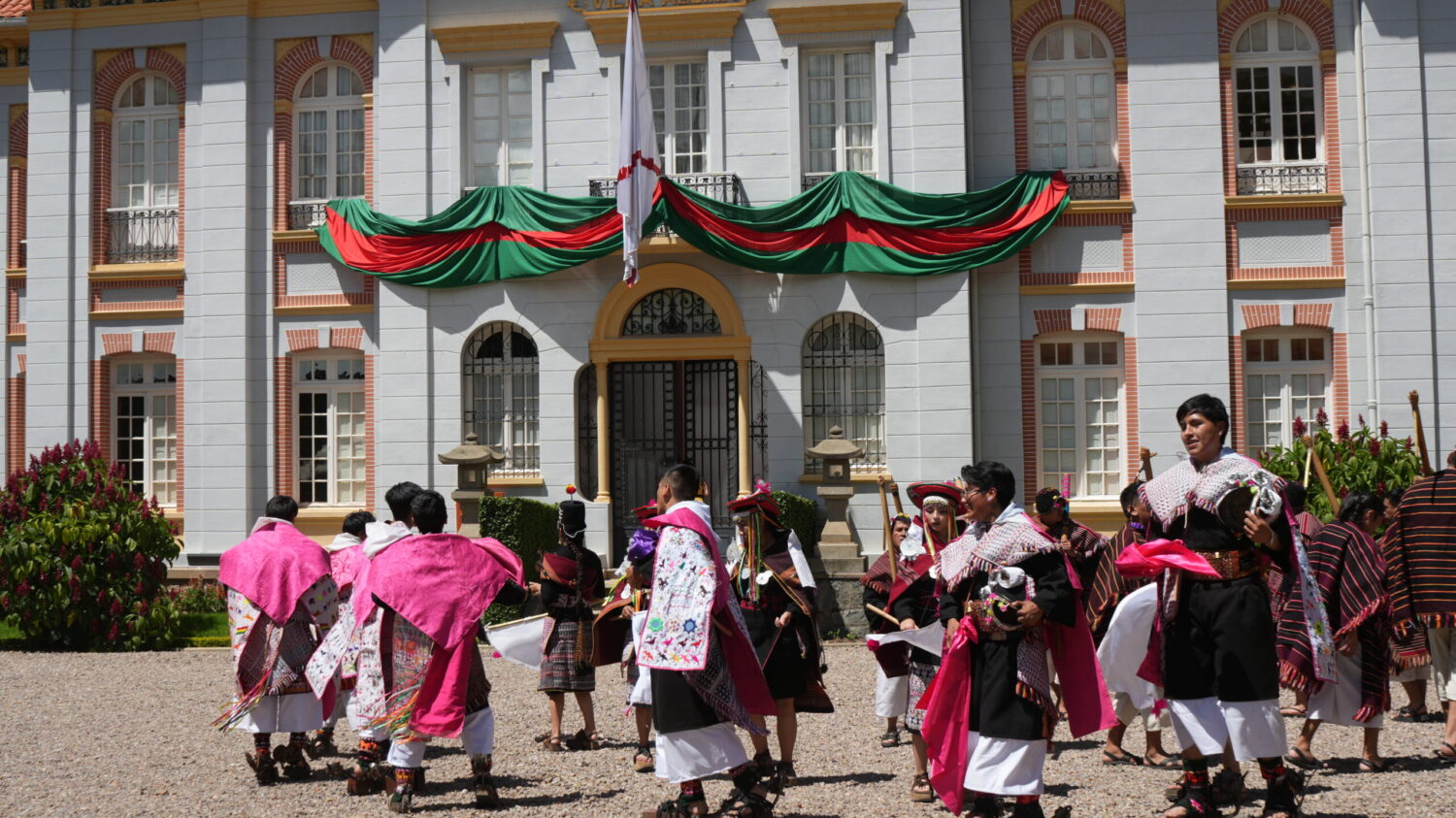
06/02/2025
Bolivia’s cultural heritage is remarkably rich: 36 officially recognized languages, living traditions, ancestral knowledge, and exceptional craftsmanship. Yet this collective memory is now under threat. Globalization, rapid urbanization, and a growing gap between generations put this intangible wealth at risk, especially among the youth.
In response to this situation, the Simón I. Patiño Foundation has been working for several years to preserve, promote, and pass on Bolivian heritage. Its approach combines educational innovation, architectural restoration, artistic creation, and digital tools to reconnect young people with their history and cultural identity.
Bolivia is one of the most culturally rich countries in Latin America. It officially recognizes 36 national languages and boasts a striking cultural diversity, from Andean rituals to Amazonian music, including traditional dances, textiles, and folk arts. This plurality is a core pillar of Bolivian identity.
Yet this vast heritage is now facing deep transformations. Rural exodus, urban education, the influence of global media, and youth migration to big cities all weaken oral transmission and lead to the homogenization of cultural references.
Ancient knowledge is being lost, and local practices are gradually fading. In some regions, indigenous languages are disappearing along with their last speakers. Hence the urgent need to document, celebrate, and transmit this heritage—not as a fixed past, but as a living, evolving resource to be reimagined with younger generations.
Bolivia faces major challenges in preserving its cultural heritage, whether tangible or intangible. One of the most alarming issues is the trafficking of cultural property: estimates suggest that over 50,000 traditional objects have been illegally diverted, sold, or taken out of the country. This is irretrievable heritage, often stripped from communities without giving them a chance to ensure its transmission.
UNESCO World Heritage Sites, such as Tiwanaku or the historic city of Potosí, are also under threat from natural decay, lack of maintenance, and insufficient public funding to ensure long-term preservation.
In rural and remote areas, access to cultural education remains very limited. Many children grow up without knowing the practices, stories, and languages that form the richness of their own region. This intergenerational gap, intensified by rural exodus and rapid digitization, hastens the loss of memory.
Although public policies acknowledge the importance of heritage, they still suffer from limited resources and a lack of coordination. Without strong support in schools and local communities, transmission too often remains theoretical or elitist.
For several decades, the Simón I. Patiño Foundation has been actively preserving and transmitting Bolivian cultural heritage, placing young people at the heart of its strategy. Its approach combines access to culture, educational outreach, architectural preservation, and support for contemporary creation, all within a participatory and open vision.
Through its educational and cultural programs, the Foundation promotes heritage discovery through lively and accessible formats: art workshops, concerts, talks, public readings, temporary exhibitions… These activities are designed to spark young people’s curiosity while rooting their learning in local cultural references. Thousands of children, teenagers, and teachers benefit from these actions each year.
The Foundation has also undertaken significant architectural restoration, especially around Palacio Portales and Villa Albina in Cochabamba. These iconic buildings have become true cultural centers open to the public, offering interactive tours, artistic events, and educational visits. In collaboration with France Muséums, the Foundation is developing a program that blends local history with contemporary museographic tools.
Aware that heritage is not limited to conservation, the Foundation actively supports contemporary artistic creation inspired by Bolivian cultures. Digital projects, art installations, and creative residencies enable young talents to explore, reinterpret, and share their cultural heritage using today’s tools.
Teachers are also involved in this momentum through interactive pedagogical projects, using digital tools as a means of transmission. By integrating cultural practices into learning, the Foundation encourages students to become active participants in living memory.
Heritage transmission cannot happen without encounters between generations. Oral knowledge, rituals, life stories, and daily gestures are not learned from books: they are shared, told, and experienced together.
The Patiño Foundation places these exchanges at the heart of its work by supporting intergenerational workshops, where elders are recognized as keepers and transmitters of memory.
Inspired by the UNESCO-recognized initiative, the Foundation supports similar projects where youth learn directly from the Kallawayas—traditional Andean healers—through participatory workshops on medicinal plants, ritual songs, or stories in native languages.
These moments of exchange value the elders, reconnect youth with their roots, and rehabilitate culture as a living force. Heritage then becomes a link, not a relic.
Preserving Bolivian cultural heritage is not about freezing the past, but about empowering new generations to evolve, reinvent, and carry it forward. With its historical roots and forward-looking vision, the Simón I. Patiño Foundation has built a deeply vibrant cultural strategy, grounded in local contexts and strongly youth-focused.
Its actions combine contemporary creation, interactive education, and collective memory. They allow children, teenagers, teachers, and artists to reclaim the symbols, stories, and practices that shape Bolivian identity. Every concert, every workshop, every visit to the Palacio Portales or Villa Albina becomes an experience of transmission—and transformation.
The impacts are tangible: increased attendance at cultural spaces, youth returning to artistic paths, reduced intergenerational gaps, and greater recognition of local practices in education projects.
But this dynamic must grow. For culture to continue uniting and empowering, strong alliances are needed—between institutions, local communities, artists, and engaged citizens. Heritage transmission is a collective responsibility, a social, educational, and symbolic investment in the future.
Join us in sustainably passing on Bolivia’s cultural heritage to future generations. Every contribution helps keep a rooted, open, and hand-to-hand transmitted culture alive.